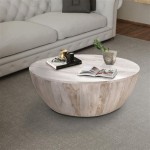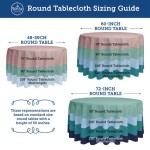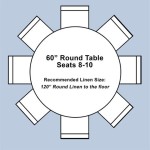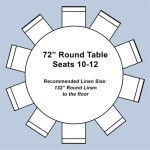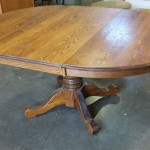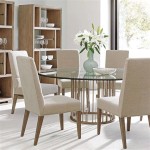How to Make a Large Tablecloth Fit a Smaller Table
Having a beautiful tablecloth can elevate any dining experience. However, sometimes the perfect tablecloth might be too large for the table it's intended for. Rather than purchasing a new tablecloth, several techniques can be employed to adapt a larger cloth to a smaller table, maintaining both aesthetics and functionality. This article will explore various methods for achieving a perfect fit, turning an oversized tablecloth into a well-suited table covering.
Folding and Tucking Techniques
One of the simplest methods for adjusting a large tablecloth involves strategic folding and tucking. Begin by centering the tablecloth on the table, ensuring equal overhang on all sides. Excess fabric can then be folded underneath along the edges. For a clean, crisp look, create even folds, similar to pleats, along the edges. These folds can be tucked under the tablecloth, creating a tailored appearance. This technique is particularly effective for rectangular or square tables. The depth of the folds can be adjusted to achieve the desired overhang. A shallower fold will result in a longer drape, while a deeper fold provides a shorter, more compact look.
Using Tablecloth Clips
Tablecloth clips offer a practical and discreet solution for managing excess fabric. These clips, available in various styles and materials, attach to the underside of the table and grip the tablecloth securely. They prevent the cloth from shifting or billowing in the wind, particularly useful for outdoor settings. When using clips, ensure they are evenly spaced around the table's perimeter to maintain a balanced drape. Choose clips that are appropriate for the table's thickness and material to avoid damage. Clear or neutral-colored clips offer a less conspicuous option. This method is versatile and works well with various table shapes and sizes.
Creative Draping and Styling
Beyond basic folding and clipping, creative draping techniques can transform an oversized tablecloth into a visually appealing table covering. One method is to create deliberate asymmetrical drapes by gathering and securing portions of the fabric. This can add visual interest and softness to the table setting. Alternatively, consider using decorative weights or tiebacks to gather and hold excess fabric at specific points. These weights can be functional and add a touch of elegance to the overall presentation. This technique allows for more artistic expression and can be customized to suit various decorating styles.
Sewing Adjustments
For a more permanent solution, sewing alterations can be considered. This involves actually reducing the size of the tablecloth to fit the table dimensions. Careful measurements are crucial before any cutting begins. Pre-washing the tablecloth is also recommended to account for any potential shrinkage. A simple hem along the edges can effectively reduce the size while maintaining a finished look. More advanced sewing techniques, such as creating darts or pleats, can be employed for a more tailored fit. This method requires some sewing skills and equipment but offers a long-term solution for a perfectly fitted tablecloth.
Layering with a Table Runner or Placemats
Another approach involves layering the oversized tablecloth with a table runner or placemats. This not only helps manage the excess fabric but also adds another dimension to the table decor. Choose a runner or placemats that complement the tablecloth in color and texture. The runner can be placed lengthwise down the center of the table, visually breaking up the expanse of the tablecloth. Placemats can be strategically positioned to further define individual dining spaces. This layering technique adds depth and visual interest while addressing the issue of the oversized tablecloth.
Utilizing a Tablecloth Underlay
A tablecloth underlay, while not directly addressing the size issue, can significantly improve the functionality of an oversized tablecloth. The underlay provides a non-slip surface, preventing the tablecloth from sliding around. This is particularly beneficial for tables with smooth surfaces. It also adds a layer of protection for the table, preventing scratches and spills from damaging the table's finish. Furthermore, an underlay can create a smoother, more even surface for the tablecloth to drape over, enhancing the overall appearance. This is an excellent supplementary option for any of the other techniques discussed, improving both form and function.
Choosing the right method depends on the specific table and tablecloth dimensions, the desired aesthetic, and the level of effort one is willing to invest. From simple folding and clipping to more involved sewing adjustments, several effective strategies can be employed to make a large tablecloth fit a smaller table perfectly.

How To Make A Tablecloth Fit Any Table Shape Or Size O Sewing

How To Make A Tablecloth Any Size Shape Pattern Calculator Treasurie

How To Make A Tablecloth Fit Any Table Shape Or Size O Sewing

Fitted Table Cover The Easy Diy

How To Make A Tablecloth Fit Any Table Shape Or Size O Sewing

Tablecloth Size Calculator Williams Sonoma Taste

Tablecloth Size Calculator Williams Sonoma Taste

Toddlers Damaging Your Furniture A Quick Diy Cornered Tablecloth You Can Sew In Just One Hour

Push Two Rectangular Tables Together To Make A Square That Seats 10 Cover It With 108 Round Tab Table Arrangements Wedding Set Up

Let S Talk Linens The Ultimate Guide To Table Linen Sizes Party Al Ltd Pink Hippo Blog
Related Posts

